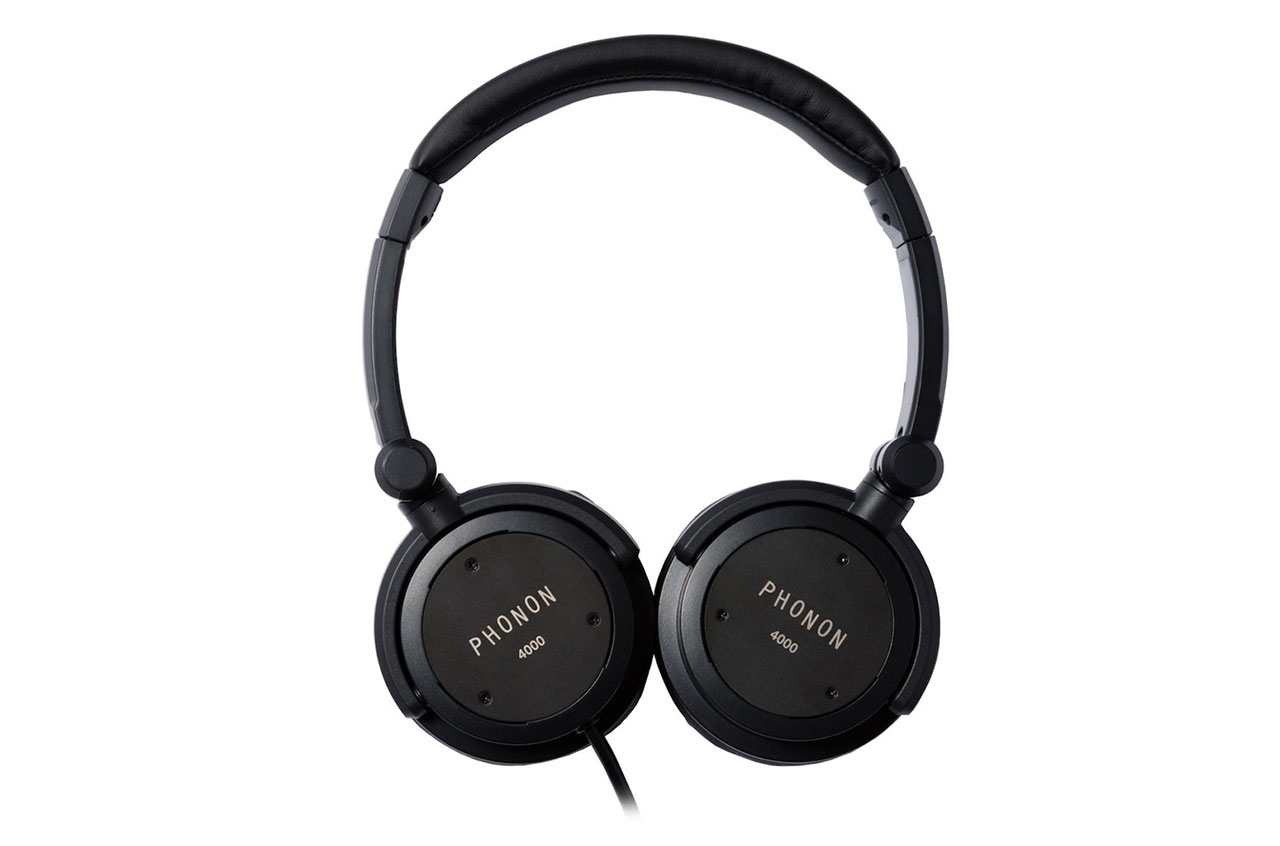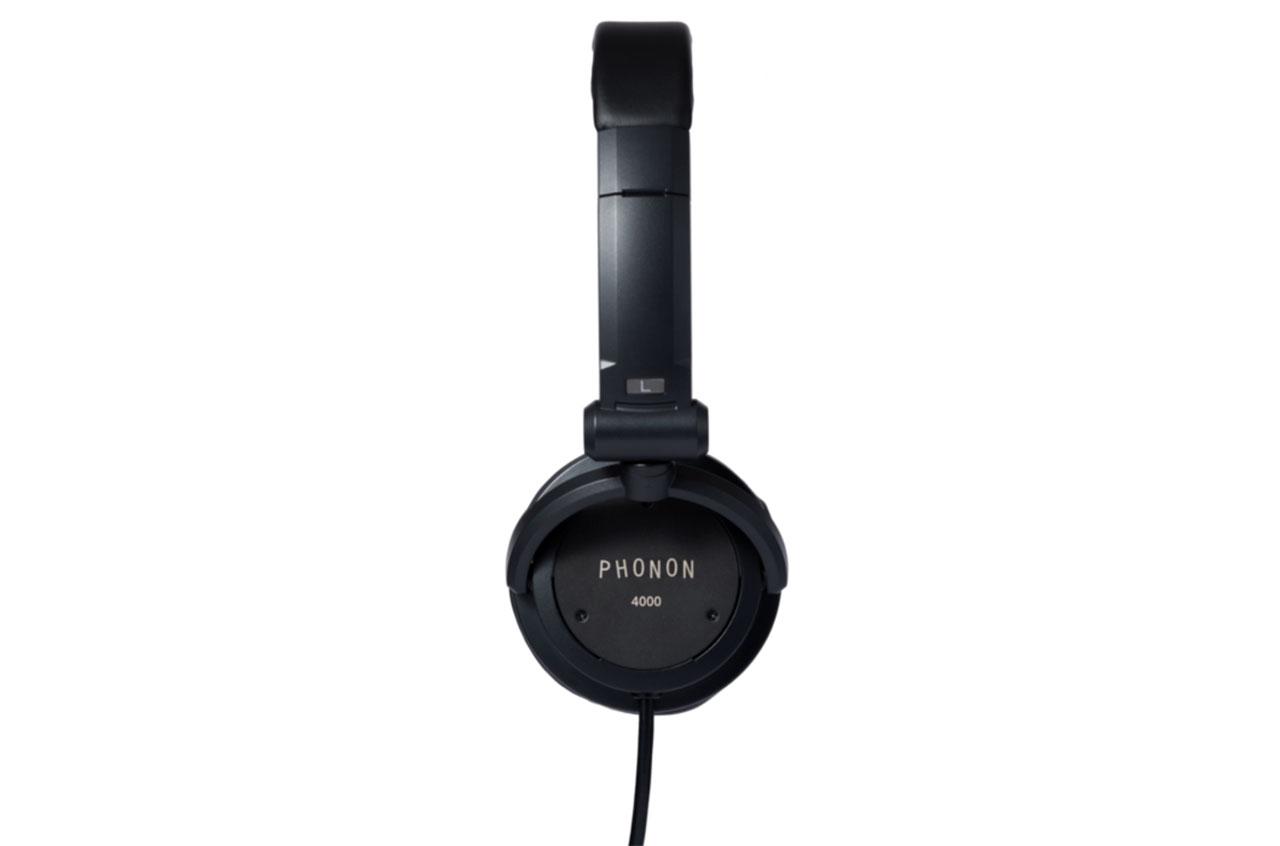- Headphones seem to bring out the pedant in us all. You could test out the most expensive model on the planet with drivers built from stardust, but if the headband design is slightly off-putting, it's game over. Heads and ears come in all shapes and sizes and everyone has their own private idea of what sounds good. Many listeners would consider an accurate frequency response to sound narrow, dull and lifeless, whereas an engineer might find most headphones hyped and harsh. Where producers might rate open-backed models for their relatively flat mid- and high-range, others might complain about the lack of bass and isolation. So if we want to talk about a certain model sensibly, we need to be clear about who it's target user is and what it's designed to do. On paper, the Phonon 4000s seem to shoot for audiophiles on the go, and if all you're doing is listening to music on your phone or computer then you could do far worse for the price. However, I found the 4000's also excelled in the booth and in certain studio contexts.
Phonon is a Japanese company whose previous model, the SMB-02, received support from the likes of Dixon, Laurent Garnier and DJ Harvey. Although testimonials emphasised its precision in the mix down, you'll also see them in the booth. I always assumed headphones came with an inevitable bias to one task or the other, so seeing professionals who could safely afford a whole wardrobe of headphones using one pair in both roles was intriguing. According to Phonon, the 4000's are merely a more portable version of the SMB-02. They have the same 40mm driver and similar impedance specs but the 4000s are lighter, $100 cheaper and foldable. The earpieces rest softly on top of your ears rather than strapping tight to your skull. So while the 4000s are technically enclosed headphones, your ears certainly aren't being suffocated. When I first took them out of the box, I immediately noted how light they felt, especially compared to the hulking Beyerdynamic DT 770s I've been using for years. A light feel can seem flimsy pretty easily but the 4000s' slight frame didn't strike me as cheap. After four months of constant use, I've grown to appreciate the balance Phonon achieved. The 4000s feel like they're floating softly atop your skull and often I'd forget they're even there. However, it'd be short-sighted to say this is purely due to weight and design.
A huge part of the reason why the 4000s are easy to wear is the way they sound. The low-end is rich without feeling woofy or unnatural, and the soundstage is refreshingly wide for an enclosed model. Much of my day is spent listening to dance music, but even in that narrow context I found that the 4000s dealt fairly with varying fidelities and production methods. On some headphones, modern tracks stomp all over less technically advanced classics from past decades but the 4000s put them on a equal playing field. This sensation becomes more apparent as you mix up the styles: shuffling between The Ex, Albert Ayler and Ellen Fullman revealed previously unnoticed nuances in each artist, despite all coming from different eras, genres and production methods.
In an effort to get a rough idea of the 4000s' frequency response curve, I A-B tested them against the 770s using Sonarwork's (highly recommended) headphone calibration plug-in, which effectively flattens the 770's hyped top-end and scooped low-mids. The comparison emphasised even further the 4000s' wide soundstage, which felt vivid and 3D while remaining faithful to the parameters of the production. It also made the 4000s' sparkly high-end lustre more evident, so perhaps there are some peaks in the upper frequencies. However, this was only apparent during direct comparison.
I also compared the 4000s with AIAIAI's TMA-2 and Sennheiser's ubiquitous HD-25s, while running vinyl through Rane's MP2015 mixer. It was here that I got a clearer sense of the 4000's strengths. While the TMA-2 and HD25 were more in-your-face, you also had a far greater sense of how they were colouring the music, even to the point of it feeling claustrophobic. The 4000s in comparison felt a lot more genuine, clean and open, with a more satisfying sense of velocity, making them a joy to use for long periods. The low-end in particular has a sense of vitality and air about it that's fairly unusual for a headphone in this price bracket.
I used the 4000s to DJ on three occasions during the testing period and I had largely the same experience in the booth as in the office. I'd forget they were on my head and the relatively uncoloured sound really helped with ear fatigue, especially in longer sets. I generally keep the headphones on both ears and pushed slightly forward, so I didn't spend much time experimenting with moving the earpieces on their hinges. They spin about 45 degrees forwards on a horizontal axis and each earpiece can flip outwards, so it's possible to hold a earpiece in your hand and push it against your ear. One drawback against using the 4000s in the booth is its relatively short cable length. If you like wandering around the booth with your headphones on, you'll probably wrench the jack out at some point. Having said that, the 4000s aren't aimed specifically at DJs and the short cable won't stop me continuing to use them. It's also worth noting that the SMB-02 has a three-metre long cable, which is twice the length of the 4000s, and those DJs using Phonon's products seem to be going with the older model.
In the studio, I found the 4000s to be usable for tasks where enjoying the sound and working for long periods were important, like in tracking and structuring. When it came to making informed decisions during the mix down, I preferred using an open back model, mainly because I was unsure how hyped they are in the upper frequencies. Again, the 4000s aren't trying to be a completely transparent headphone, so the comparison is a little unfair. My preference for the open-back model is probably due to paranoia about my monitoring situation and a subsequent over-reliance on headphones—I'm sure there are loads of people who could make great mixes with the Phonons. The 4000s' true strengths are its sound, price and portability, making them ideal for travel and casual usage. But it'd be wrong to limit their appeal to non-professionals because the sound and fit is so good. I would recommend the 4000s to someone who can't afford multiple pairs of headphones but needs a model for DJing, production and everyday use but if you're looking for a headphone whose eggs are more firmly placed in the professional user basket, I'd recommend checking out the SMB-02.
Ratings /
Sound: 4.7
Cost: 4.0
Build: 3.8
Versatility: 3.9
 I used the 4000s to DJ on three occasions during the testing period and I had largely the same experience in the booth as in the office. I'd forget they were on my head and the relatively uncoloured sound really helped with ear fatigue, especially in longer sets. I generally keep the headphones on both ears and pushed slightly forward, so I didn't spend much time experimenting with moving the earpieces on their hinges. They spin about 45 degrees forwards on a horizontal axis and each earpiece can flip outwards, so it's possible to hold a earpiece in your hand and push it against your ear. One drawback against using the 4000s in the booth is its relatively short cable length. If you like wandering around the booth with your headphones on, you'll probably wrench the jack out at some point. Having said that, the 4000s aren't aimed specifically at DJs and the short cable won't stop me continuing to use them. It's also worth noting that the SMB-02 has a three-metre long cable, which is twice the length of the 4000s, and those DJs using Phonon's products seem to be going with the older model. In the studio, I found the 4000s to be usable for tasks where enjoying the sound and working for long periods were important, like in tracking and structuring. When it came to making informed decisions during the mix down, I preferred using an open back model, mainly because I was unsure how hyped they are in the upper frequencies. Again, the 4000s aren't trying to be a completely transparent headphone, so the comparison is a little unfair. My preference for the open-back model is probably due to paranoia about my monitoring situation and a subsequent over-reliance on headphones—I'm sure there are loads of people who could make great mixes with the Phonons. The 4000s' true strengths are its sound, price and portability, making them ideal for travel and casual usage. But it'd be wrong to limit their appeal to non-professionals because the sound and fit is so good. I would recommend the 4000s to someone who can't afford multiple pairs of headphones but needs a model for DJing, production and everyday use but if you're looking for a headphone whose eggs are more firmly placed in the professional user basket, I'd recommend checking out the SMB-02. Ratings / Sound: 4.7 Cost: 4.0 Build: 3.8 Versatility: 3.9
I used the 4000s to DJ on three occasions during the testing period and I had largely the same experience in the booth as in the office. I'd forget they were on my head and the relatively uncoloured sound really helped with ear fatigue, especially in longer sets. I generally keep the headphones on both ears and pushed slightly forward, so I didn't spend much time experimenting with moving the earpieces on their hinges. They spin about 45 degrees forwards on a horizontal axis and each earpiece can flip outwards, so it's possible to hold a earpiece in your hand and push it against your ear. One drawback against using the 4000s in the booth is its relatively short cable length. If you like wandering around the booth with your headphones on, you'll probably wrench the jack out at some point. Having said that, the 4000s aren't aimed specifically at DJs and the short cable won't stop me continuing to use them. It's also worth noting that the SMB-02 has a three-metre long cable, which is twice the length of the 4000s, and those DJs using Phonon's products seem to be going with the older model. In the studio, I found the 4000s to be usable for tasks where enjoying the sound and working for long periods were important, like in tracking and structuring. When it came to making informed decisions during the mix down, I preferred using an open back model, mainly because I was unsure how hyped they are in the upper frequencies. Again, the 4000s aren't trying to be a completely transparent headphone, so the comparison is a little unfair. My preference for the open-back model is probably due to paranoia about my monitoring situation and a subsequent over-reliance on headphones—I'm sure there are loads of people who could make great mixes with the Phonons. The 4000s' true strengths are its sound, price and portability, making them ideal for travel and casual usage. But it'd be wrong to limit their appeal to non-professionals because the sound and fit is so good. I would recommend the 4000s to someone who can't afford multiple pairs of headphones but needs a model for DJing, production and everyday use but if you're looking for a headphone whose eggs are more firmly placed in the professional user basket, I'd recommend checking out the SMB-02. Ratings / Sound: 4.7 Cost: 4.0 Build: 3.8 Versatility: 3.9